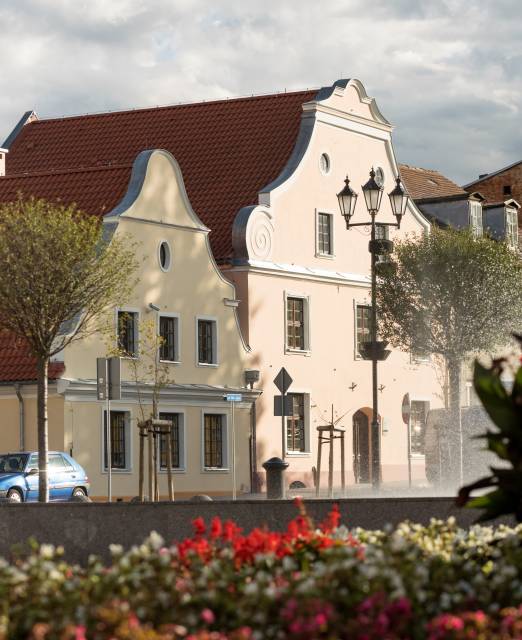The Grand Army of Emperor Napoleon Bonaparte, advancing eastwards, occupied Włocławek on 15 November 1806. Under the terms of the Treaty of Tilsit
(7 to 9 July 1807), the Grand Duchy of Warsaw was established from parts of the lands seized by Prussia, including Włocławek.
During the hostilities of 1809, Austrian troops marched through the town. Their goal was Torun. This operation ended in defeat for the invaders, as did the entire war. During the time of the Grand Duchy of Warsaw, various French and Polish military units were temporarily stationed in Włocławek. As a result of the French defeat in the Russian campaign of 1812, the Duchy of Warsaw effectively collapsed. The Russian army, advancing westwards, occupied the city on 5 February 1813.
Under the provisions of the Congress of Vienna in 1815, the city became part of the Kingdom of Poland, formed from part of the lands of the Duchy of Warsaw, bound by constitution and personal union with the Russian Empire. A new administrative division into provinces and districts was introduced. Włocławek became the seat of the commissioner of the Kuyavia district, which became part of the Mazovian province.
Between 1815 and 1830 the town began to recover from its deep decline. During this period, a modern town plan was drawn up, St Anthony's Hospital was founded, and the Bohm brothers established the first chicory factory in the kingdom in nearby Zazamcze. An Evangelical Augsburg congregation and a Masonic lodge: ‘The Excellent Union of the Working East of Włocławek’ /in Polish: Doskonałe Zjednoczenie na Wschodzie Włocławka Pracujące / were also established.
On 29 November 1830 an anti-Russian uprising broke out - the November Uprising. It was organized in December 1830. The Civic Committee of the Kuyavia district took over the organization of the guards and a battalion of mobile guards.
At the beginning of 1831 the 1st Infantry Regiment of the Mazovian Province was formed.
In the middle of 1831, the area around Włocławek was the scene of numerous marches of the Polish and Russian armies. Despite the resistance of the local army of tenants and the muster military units, the Russian troops captured the city on 20 July 1831. After the fall of Warsaw, on 8 September the Polish army marched from Płock to Szpetal, where a bridge over the Vistula River was built. On 29 September some of the troops crossed the bridge to Włocławek, but the next day they retreated to Szpetal. Weakened and partly demoralized, the Polish army marched through Lipno - Skępe - Rypin - to Brodnica on the Prussian border. They crossed it on 5 October 1831. The uprising failed. However, many historians agree that it had a good chance of success.
In 1863-1864 the January Uprising shook the Kingdom of Poland. As early as 1861, Włocławek society took part in a wave of national demonstrations. In the same year the city was under martial law, which was tightened with the outbreak of the uprising. During the uprising, Włocławek remained in Russian hands as the seat of a strong garrison.
At the beginning of February 1863, the first insurgent unit was formed near Przedecz under the leadership of Kazimierz Mielecki. His unit fought in Przedecz, near Ciepliny, Nowa Wieś and Mieczownica. On 19 February, a deadly battle took place near Krzywosądz. The troops of Ludwik Mierosławski, the dictator of the uprising, were crushed by Russian troops. On 22 March 1863, Kazimierz Mielecki group, supported by Edmund Callier's unit, fought a battle with the Russians near the village of Olszowe. Both commanders were seriously wounded. At this time the units of Leon Young de Blankenheim, Kazimierz Oborski, Edmund Taczanowski and Józef Alojzy Seyfried were active in eastern Kuyavia. These troops fought a victorious battle at Nowa Wieś on 26 April 1863, forcing the Russians to cross the Prussian border.
In 1863-1864 Włocławek was the scene of cruel repression against insurgents. Interim prisons were set up in many buildings. Death sentences were carried out on the spot. After the failure of the uprising, the Russians completely abolished the remaining autonomy of the Polish Kingdom. They transformed it into the Vistula Land / in Polish: Kraj Przywiślański/



 Places
Places Guides
Guides Map
Map Outdoor games
Outdoor games Trails
Trails Events
Events Mobile app
Mobile app Contact
Contact


